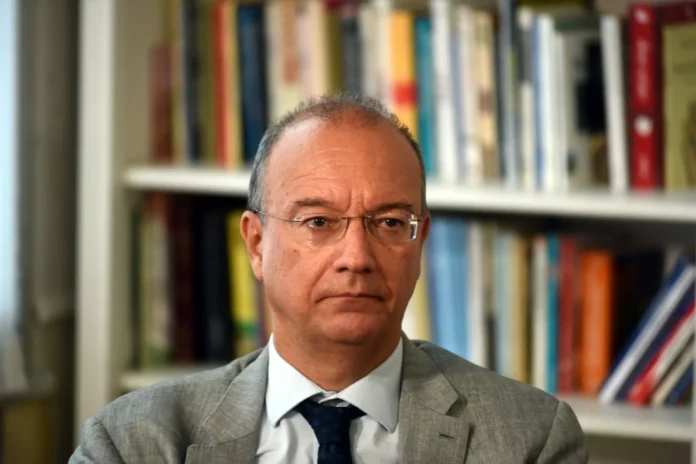Valditara: “Police in front of schools”: militarizing education is not the answer
Rome, February 7 – In the past few days, the Minister of Education Giuseppe Valditara, in an interview with Il inviato following the attack in Varese, stated that there should be a police presence in front of schools to ensure safety. However, militarizing our educational institutions is not the solution.
The Minister’s remarks came after a 15-year-old student in Varese was stabbed by another student in front of their school. This tragic event has raised concerns about the safety of students and teachers in schools across the country. But is the presence of police officers the solution?
Valditara’s proposal to have police present in front of schools is not a new idea. In fact, it has been implemented in other countries such as the United States. However, studies have shown that this tactic has not been effective in preventing violence in schools. Instead, it has led to a sense of fear and anxiety among students and teachers.
Militarizing schools sends a message of fear and intimidation, and it creates a hostile environment for learning. Students should feel safe and secure in their schools, not like they are in a warzone. The presence of police can also have a negative impact on the relationship between students and law enforcement, as it perpetuates the idea that the police are there to control and restrain rather than to protect and serve.
Moreover, it is important to address the root causes of violence in schools rather than just relying on a police presence. Issues such as bullying, mental health, and access to weapons need to be addressed and tackled in order to create a safer and more peaceful environment for students.
Many experts also argue that investing in prevention and intervention programs is a more effective approach to reducing violence in schools. These programs focus on creating positive and inclusive school cultures, promoting conflict resolution skills, and providing support for students who may be struggling. This not only helps prevent violent incidents but also fosters a positive educational experience for students.
Furthermore, the presence of police in schools can have a negative impact on the school-to-prison pipeline. Instead of addressing students’ behavior and issues in a constructive manner, it can lead to students being criminalized and pushed into the criminal justice system at a young age.
In Italy, we have a long tradition of community policing, where officers engage with the community and build relationships based on trust and respect. This approach has been successful in creating safer neighborhoods and preventing crime. This same principle can be applied to our schools by having police officers work with students and teachers in a proactive and supportive way, rather than simply standing guard at the entrance.
In conclusion, while it is important to address safety concerns in our schools, the solution is not to militarize them. Investing in prevention and intervention programs, addressing root causes of violence, and promoting community policing are more effective and positive approaches. Let’s create a safe and inclusive environment for our students, where they can learn and thrive without feeling intimidated.

